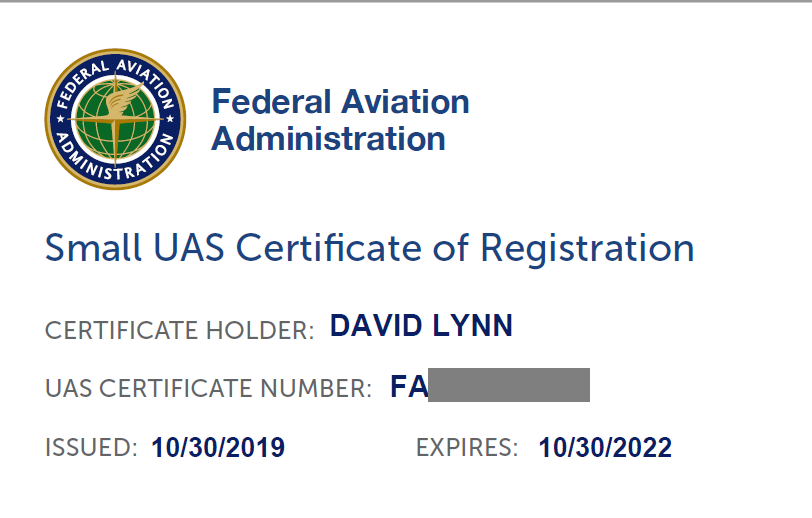Blue View – Before You Fly a Drone
/I had planned to do this week’s Blue View on learning to fly my - uh, I mean Marcie’s - new drone. I thought I’d have all kinds of cool video footage by now, showing all the impressive aerobatics I had mastered with the new drone. But, alas, it wasn’t to be. It’s not that it crashed and burned or got stuck high up in a tree. It didn’t fly away over the horizon in search of a new and more talented pilot, nor did an osprey swoop down and take it home – all stories related to me, by the way, by friends and acquaintances who didn’t have the greatest luck with their drones.
Nope... my excuse is much simpler. Between high winds, rain and snow, the weather has been too crappy to fly, and the drone has been grounded all week. So, instead of a video, this week’s Blue View is devoted to some of the things to be aware of before flying a drone.
Registration.
Just like any aircraft, whether manned or not, there are FAA rules and regulations that apply to drones. One of these rules is that any drone that weighs more than 0.55 lbs and is flown outdoors must be registered with the FAA. The registration process can be done online and takes only a few minutes to complete. This link will take you to the FAA page to begin the registration process. The cost is $5 and is valid for three years. Once registered, you are required to carry proof of registration when flying the drone. After completing the registration process, a .pdf of the proof of registration will be emailed to you, which can be printed. Alternatively, you can opt to have a laminated registration card snail-mailed to you.
Registration number.
Once registered, you will be issued a registration number. This number must be marked on an outside surface of the drone. You can engrave the number, write the number with a permanent marker, or use a permanent label. For a small fee, the FAA will print and mail permanent labels to you if desired.
License.
The steps for obtaining a drone pilot license are as follows:
Be at least 16 years of age
Pass the FAA Aeronautical Knowledge Test
Apply for and obtain a Remote Pilot Certificate, which can be done online
Pass a TSA background check – also done online
Pay the $150 license fee.
That’s the bad news. The good news is that if you fly a drone solely for recreational or hobby purposes, and your drone weighs less than 55 lbs, then you are not required to become a licensed pilot. (It seems odd to me that they chose 0.55 lbs and 55 lbs as their weight limits. These equate to approximately 0.25 kg and 25 kg, so perhaps the rationale was to use metric units, but if so, why publish only the imperial units?).
No-fly Zones.
There are many places where drones are banned - national parks and monuments, many state parks, near airports, hospitals with helipads, stadiums and sporting events, and many cities to name a few. The FAA provides a free mobile app, B4UFLY, that will tell you whether your location is a no-fly zone.
Other Rules.
Finally, here are several tips and rules to keep in mind when flying a drone for recreational or hobby purposes:
Keep the drone at an altitude of 400 feet or less.
Keep the drone within your line of sight
Never fly near other aircraft
Never fly over groups of people, public events, or stadiums full of people
Never fly over or near emergencies. This includes any type of accident response, law enforcement activities, firefighting, or hurricane recovery efforts
Never fly under the influence of drugs or alcohol
Finally, a new law is in the works that will require any drone operator to pass an online aeronautical knowledge and safety test and carry proof of test passage
The weather forecast for the next day or two looks much more favorable for flying, so I’m optimistic that next week’s Blue View will, at long last, be that video I was hoping for. Come watch and see how we do.





